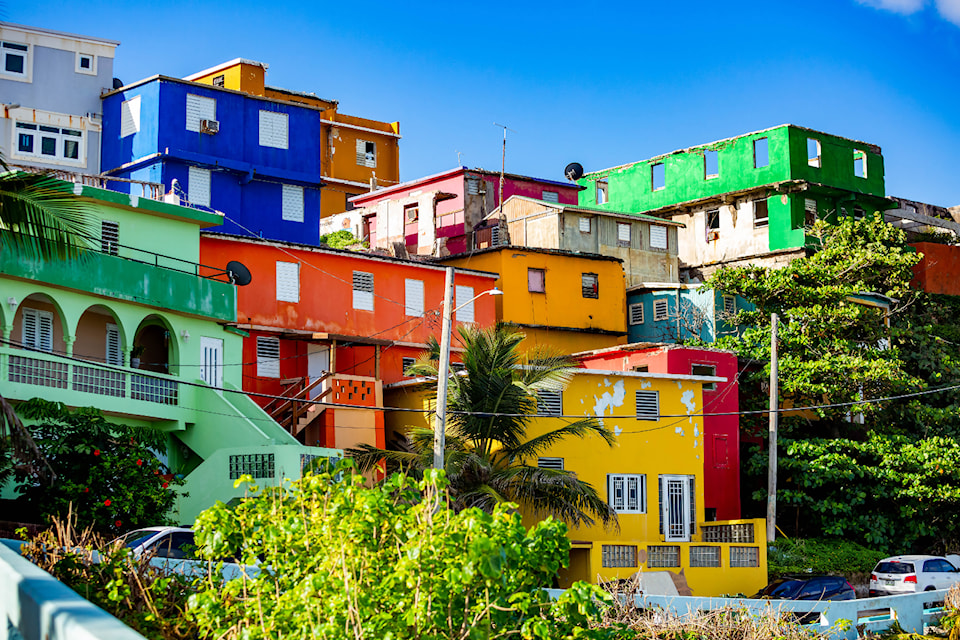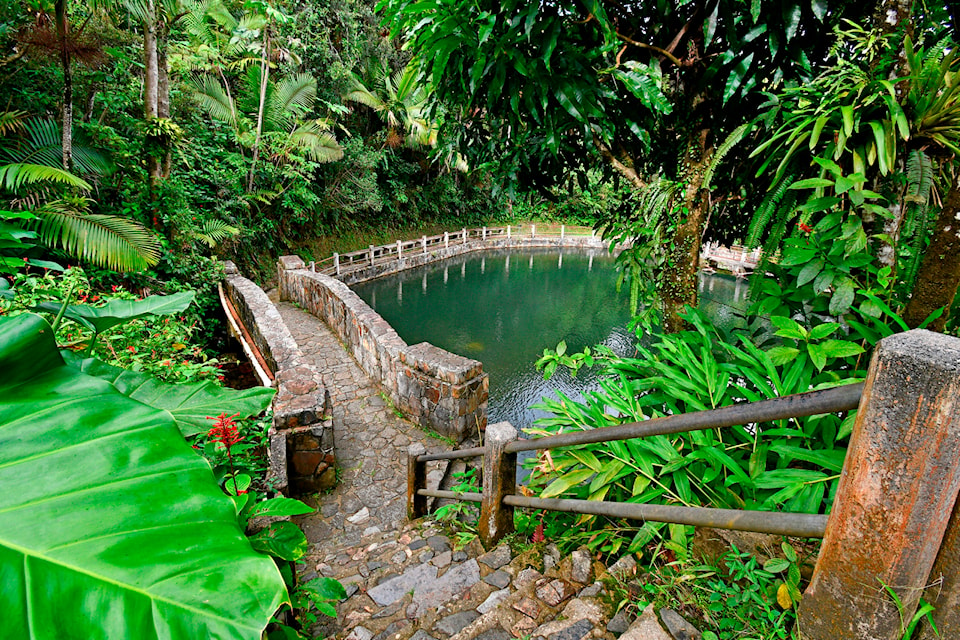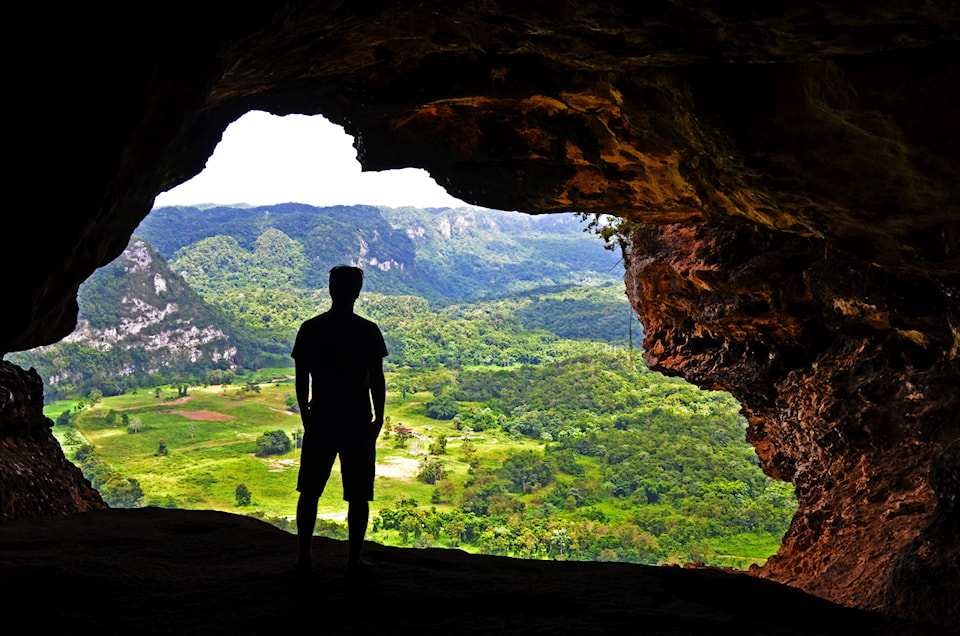W
e are kayaking around a large, man-made lagoon in San Juan, Puerto Rico, admiring the new high-rise condominiums, when my guide points to the banks of the lagoon, where mangrove trees dip their nubby, mussel-encrusted fingers into the water.
“Not long ago the lagoon banks were completely covered in green iguanas,” he says, of the six-foot reptiles that were released into the wild by pet owners back in the 1970s. “They were invasive and caused so much damage that the government gave us permission to hunt them. I don’t eat them. But people who do say they taste quite good, like chicken.”
There’s not a single iguana sunning itself on the lagoon banks now, and the once-polluted waters have been cleaned up. Today kayakers and paddle boarders glide around the lagoon and swimmers wear masks and snorkels in hopes of seeing the manatees, lobster, fish and sea turtles that now swim freely between the ocean and the lagoon.
Just across the road lies the golden sand of the Isla Verde beaches, where cruise ship and resort travellers spend their free time sipping piña coladas as they soak up the sun.
Here is some advice: when given the choice between days of sun-baked lethargy or heading out to explore Puerto Rico, don’t think twice. Rent a car, pack a spirit of adventure and hit the road. This American territory is completely un-American, an island with a fascinating history and a rich cultural identity. Head on hikes into its lush, tropical rainforests, and take a snorkelling trip to see its brilliantly iridescent marine life in the Caribbean Sea. In short, say no to the fog of beach days defined by alcohol and suntanning. There’s just too much else to see and do in Puerto Rico.
You can’t leave San Juan without exploring Old San Juan, and one of the best ways to do this is with Spoon, a boutique food and history company. Our guide, Pablo Garcia, is a mixture of performer, history buff and culinary connoisseur, and he starts our tour in the Plaza del Quinto Centenario, where fortifications more than 500 years old lie before us.
La Fortaleza and El Morro were built in the 1500s, and their thick, stone walls, 185 feet above sea level, guarded the city’s harbour from invaders. The walls are punctuated by “garritas,” dome-shaped sentry booths located shouting distance from each other, so when one sentry perceived a threat on the horizon, he simply yelled a warning to his cohorts.

We stop for coffee at Don Ruiz, a coffee shop located in Ballajá Barracks, a historic building and former military housing. The coffee beans are from a four-generation family farm specializing in single-harvest, hand-picked beans.
“In the 1700s, coffee was big business in Puerto Rico and one in every six cups of coffee worldwide was made with beans grown on the island,” Pablo says. “Coffee money built our roads and sealed our dams.”
It also caused the deforestation of 95 per cent of Puerto Rico.
Spain maintained a stronghold on the island until 1898, when it became the US territory it is to this day. But the Spanish influence remains pervasive, easily perceptible in the mother tongue, the cuisine and the islanders’ distinct cultural identity.
Over the next three hours, we wander between restaurants in beautifully preserved, colourful buildings in Old San Juan’s narrow, brick-laid streets. We sip soursop juice, a local hangover cure with a pear-like taste, and sample mofongo, a pastry made from mashed, fried green plantains.
We stop outside a local bank where Spanish history is boldly declared in a circular symbol above the door.
“That’s the seal of Puerto Rico, still used to stamp new laws to this day,” Pablo says. The seal depicts a tower representing Queen Isabella of Castile, a lion representing King Ferdinand II of Aragon and a cross symbolizing the Spanish Inquisition and Spain’s “discovery” of the New World.
The next day we head east to El Yunque National Forest, a tropical rainforest 40 minutes and a world away from the bustle and traffic of San Juan. The 28,000-acre forest is a fragrant tangle of lush greens where every leaf is wet with moisture and the pulsing flow of water can be seen everywhere. We inhale the rich, earthy aroma and listen to the musical mating calls of the coqui frogs.
Our guide, Franki Battistini, leads us to the Pimenta racemosa, a plant whose leaves numb aches and pains, and points out the taro, whose roots are an island carbohydrate staple. We see the calabash tree, whose fruit, once dried out, becomes a bowl for future meals, and the ylang-ylang, whose fragrance is found in Chanel No. 5.

He gestures at trees colonized by bromeliads, ferns and moss, and says, “These plants are full of medicinal properties that we’re still discovering. The cure for cancer could be right here.”
The forest didn’t look this verdant seven years ago, when Hurricane Maria struck the island, battering it with winds of up to 200 miles per hour for more than 30 hours. Franki lived through it and remembers its howl like a terrifying wolf at the door. When it finally receded, the trees that remained were bare, and the once thick canopy in El Yunque was decimated.
As it happens, that was a good thing.
“We don’t have a dormant season in Puerto Rico, so hurricanes are our natural landscapers – they clean things up,” he says. Within three months, the ferns, grasses and vines were back, stimulated by the loss of canopy cover and the higher temperatures.
We see massive tree ferns, bamboo forests and the Ceiba, Puerto Rico’s national tree, whose roots create the dam they need to sustain their growth for up to 300 years.
We climb a tower leading to a view of El Yunque’s cloud-shrouded peaks, 3,500 feet above sea level. The rainforest tumbles towards the ocean and on a clear day you can see all the way to the island of Saint Thomas, 179 kilometres away in the Caribbean Sea. It’s an average day on the island, with the mercury hovering around 80 degrees Fahrenheit, and the prospect of playing in that sea is just irresistible.
Within 15 minutes we are at the marina, boarding a vessel destined for the coral reef. And 20 minutes later, we’re in the warm Caribbean water, surrounded by schools of iridescent fish and mesmerized by an underwater world swirling with vibrant colour.
It’s not what comes to mind when you think about domestic travel in the United States, but Puerto Rico is a uniquely un-American American destination. This is an island whose appeal lies in its deep historical roots, its rich cultural tapestry and its exquisite natural beauty, both above and below sea level.
Oh, and don’t leave without trying its national drink, that heady mix of coconut cream and pineapple juice fondly known as the piña colada.
If you go:
Getting there: There are no direct flights to Puerto Rico from Vancouver. The commute requires a stopover and around eight hours of flying time.
While many of the big-brand hotels have a strong presence on the island and high price tags for accommodation, there are also many small inns and “paradores,” family-owned properties offering a more intimate hospitality experience. To explore them and find more information on Puerto Rico, visit DiscoverPuertoRico.com.
The Spoon Experience (thespoonexperience.com) offers boutique food and history tours of Old San Juan.
To eat like a local, visit Loiza, where a selection of kiosks and restaurants on the cusp of the boardwalk offer stuffed mofongos (mashed plantains), alcapurrias (fritters) and fresh-caught seafood with rice and beans.
To get a meaningful glimpse at the forest’s vegetation, El Yunque is best explored in hiking boots, with or without a guided tour. Tours with varying levels of adventure are available. fs.usda.gov/elyunque
Book a snorkelling trip to the coral reef from the Luquillo Marina, where many operators offer half-day excursions.
This article appeared in the fall edition of Boulevard Okanagan.



